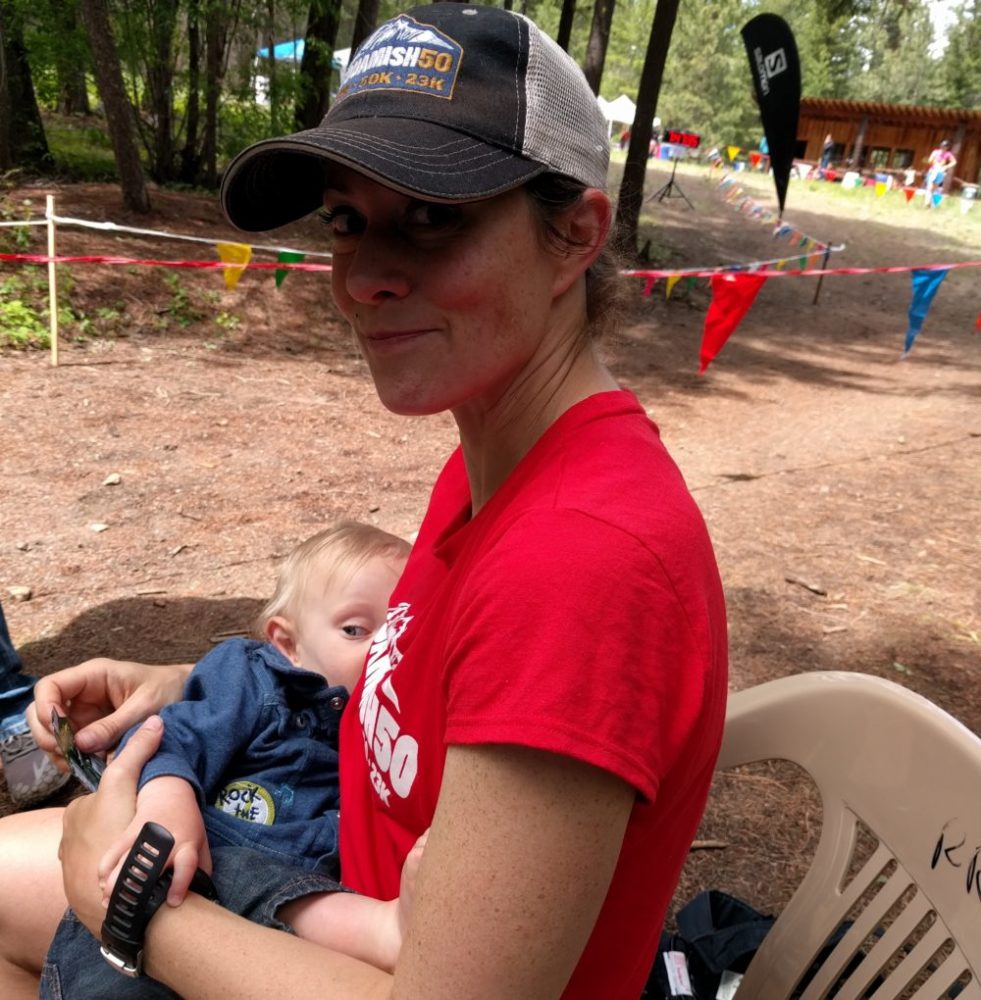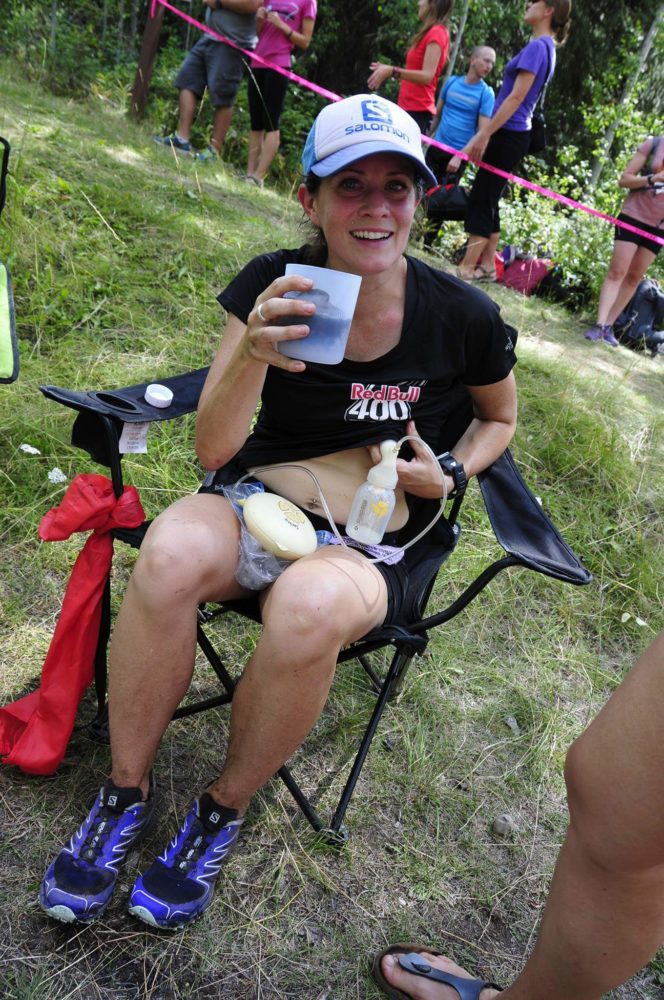Breastfeeding on the trails: kid’s gotta eat
Ultrarunner Linda Barton-Robbins shares her experience and tips on combining breastfeeding with extreme distance training and racing

When British runner Sophie Power breastfed her 3-month old son at Ultra-Trail du Mont Blanc (UTMB) this year, it caused a sensation. But for trail running mothers who breastfeed, it can be one more thing to manage while running ultra distances in the mountains. Accomplished trail and ultrarunner Linda Barton-Robbins has run distances up to 196K while her son Reed was still breastfeeding. If breastfeeding is a part of your family’s lifestyle, there are a few variables to consider in making it a natural part of your training and racing.
https://www.instagram.com/p/BnlZWPAFO_y/
Self-Management
“Ultrarunning is very much about self-management. Got a blister? Tape it and keep moving. Breasts full? Hand express, or get to the aid station and pull your portable pump out of your drop bag.” Barton-Robbins explains. Whether it’s a blister, nausea, chafing, route navigation, or nursing your child–it’s all about preventing the inevitable and adapting when times get tough. If pumping works for you, then it can become an essential on the trails.
RELATED: The trail running mom
Frequency
How often a woman needs to nurse depends on how often she is feeding her child day to day. Barton-Robbins ran a trail marathon when Reed was six months old, and managed to do the whole race without pumping. “I pumped in the car right before the race started. By the final miles, my breasts were uncomfortably full, and I felt milk running down my ribs. I fed Reed right after, and he drank so much, he puked it right back up. In retrospect, I should have taken 15 minutes halfway through the race to express milk. I would’ve been more comfortable, and Reed wouldn’t have had such a bellyful.”

Eating is Training
Breastfeeding burns between 200 and 500 calories per day. Combine that with training for an ultra trail race, and your calorie needs are substantial. While training for an ultra, Barton-Robbins felt very tired. “I was advised by a nutritionist to add fat to my diet, and to continually eat as much healthy food as I wanted. I also made sure to eat 300 calories per hour while running. When I didn’t, I would feel lethargic and ‘bonky’ right after pumping.”
Race Organization
For longer races, Barton-Robbins recommends putting a portable pump in drop bags. “I would nurse Reed at the start line and hand him off right before the gun. I ran a 50K where I pumped halfway. In a 50-mile (80K) race I pumped partway through, then had Gary (her husband) and Reed meet me at an aid station, and I fed Reed there.”

Preparing your Pack
One week before Reed’s first birthday, Barton-Robbins ran the Fat Dog 122-mile (196K) endurance run. She ran with a hand pump in her pack and had a portable pump in drop bags. Although she had run many 100-mile races, she “really wanted to do a 100-miler before he turned one.”
Adaptation
Before running Fat Dog, Barton-Robbins emailed the race director asking whether her pacers could carry her pump. Normally, in ultrarunning races pacers are not allowed to “mule” or carry items for any runners. The race director “agreed this would be the best for the wellbeing of my child. So I put it in my first drop bag and carried it for awhile, and then handed it off to my pacers. I pumped every four to six hours. I did feed Reed once during the first night, and then at the finish line.”
RELATED: Advice from real Canadian parents: Don’t feel bad about prioritizing yourself

Pump and Race
Aid stations look different when you are fuelling for two. In order to avoid the “booby bonk,” Barton-Robbins would eat at least 100 calories right before and right after pumping. “Those extra calories help to keep milk production up and prevent the feeling of bonking.”
Endurance Milkshake
“Know that it would take some very extreme conditions for running to affect milk production. It might affect how the breast milk tastes, due to the lactic acid produced in your body. Overall, babies fed by exercising mothers grow at the same rate as babies fed by sedentary mothers. Your baby will eat what is offered and most don’t mind a little milk shake.”

RELATED: Speedy Canadian running moms
Consult doctors and experts
Some doctors may think you are crazy. But as a trail runner, you’re used to that. Barton-Robbins advises women to communicate with their health care professionals about running and breastfeeding, but also to do what is right for you and your family. “What worked for me, may not work for another woman.”


